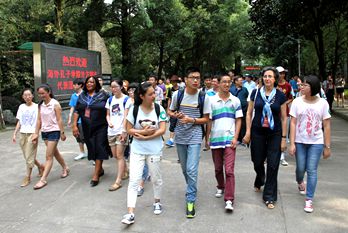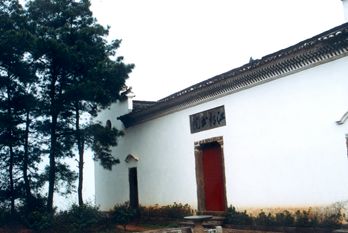Zhejiang park boasts unique ecosystem

A black muntjac is captured on an infrared camera in the national park in Zhejiang. CHINA DAILY
A Chinese serow drinks from a clear brook, a leopard prowls stealthily through the mountains at night, an Asiatic black bear roams the forest in broad daylight and a crested serpent eagle flaps its way across the sky.
These are among some of the most common sights in the Qianjiangyuan section of the Qianjiangyuan-Baishanzu National Park, which was created in 2020 following the integration of the Qianjiangyuan and Baishanzu national parks.
Located in the northwestern part of Kaihua county in Zhejiang province, the Qianjiangyuan section of the park covers an area of 252 square kilometers and includes three reserves, four towns and 21 administrative villages. It was one of the first 10 pilot national parks created in 2016 to protect China's environment.
As its name suggests, Qianjiangyuan is the source of the Qiantang River, the "mother river" of Zhejiang province. It is still home to a large area of native evergreen broad-leaved vegetation typical of lowland mid-subtropical zones that is increasingly rare in other parts of the world.
Rich biodiversity
The area is home to 61 species of rare and endangered plants, 14 of which are native to China, as well as a diverse avian community, and accounts for over half the bird species found in Zhejiang.
China's forestry authorities say that an ecosystem of this scale is unique in the world, according to Fu Bojie, an academician at the Chinese Academy of Sciences.
"It is of great value to environmental protection and scientific research worldwide," Fu said.
Qianjiangyuan is also home to rare and endangered animals, including natives such as the black muntjac, an animal that Wei Fuwen, another CAS academician, said was comparable to the giant panda. Worldwide, about 10 percent of black muntjacs, which belong to the deer family, live in Qianjiangyuan.
A few hundred kilometers to the south lies the Baishanzu area of the park. Situated in Qingyuan county, Lishui city, it is named after one of the highest mountains in the area and covers 505 sq km. Some 1,860 meters in height, Baishanzu literally means the "ancestor of hundreds of mountains", which speaks of its significance.
Much like Qianjiangyuan, Baishanzu is also a natural habitat for rare and endangered species. Visitors can see the world's rarest conifer, the Baishanzu fir, or Abies beshanzuensis. Currently, the reserve is home to just three of the trees, which have been classified as critically endangered by the International Union for Conservation of Nature.
In addition, 2,102 species of vascular plants, 416 vertebrates and 632 macrofungi have been identified in the Baishanzu area.
The rich ecosystem and biodiversity of the national park have become a focus of research for both Chinese and foreign scientists, who have set up biodiversity monitoring platforms, research stations and climate change centers. In June, a new species of frog was discovered in Baishanzu during a biodiversity survey, and has been aptly named Megophrys baishanzuensis.
The research programs also support China's ongoing efforts to protect wild flora and fauna and their habitats in recent years. In late May 2019, scientists from Zhejiang University successfully returned three artificially-cultured Baishanzu fir seedlings to their natural habitat, just a year after they had cultivated the world's first Baishanzu fir seedlings using embryo technology. More is being done to expand the naturally grown population of these living fossils, and it is hoped the species will eventually be removed from the critically endangered list.
Common prosperity
For villagers in the Qianjiangyuan-Baishanzu National Park, conservation doesn't come at the expense of livelihoods. Instead, innovative policies have helped improve lives.
In 2018, the Qiangjiangyuan administration began to roll out land easement reforms under which villagers who collectively own large portions of forest and individually hold rights of use are encouraged to lease the land to authorities for conservation and management. In exchange, they receive compensation.
Hengzhong village, one of the most remote in Kaihua county, was the first to test the waters.
The 0.73 hectares of forest allocated to Yu Jiaqi were not managed and provided his family with no income as a result of Yu's chronic pneumonia until, that is, he signed a conservation easement agreement in 2018. "I receive 2,000 yuan ($300) a year," he said.
All 399 households in the village have now signed up.
In addition, Hengzhong has set up a public fund for forest management and development and has started businesses related to tourism. Each year, 50,000 yuan from the fund is used toward environmental restoration and protection.
Recently, the reforms have been extended to farmland in and around the national park.
Contact the writers at mazhenhuan@chinadaily.com.cn

 City brand logo - fist-and-palm salute
City brand logo - fist-and-palm salute Confucianism on campus
Confucianism on campus The culture of the academy
The culture of the academy